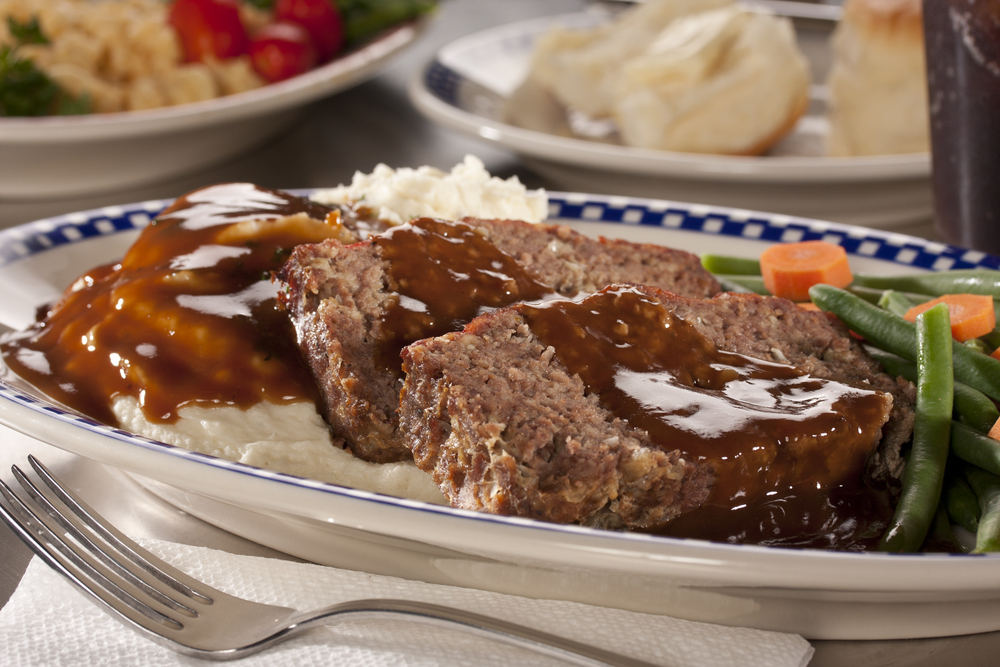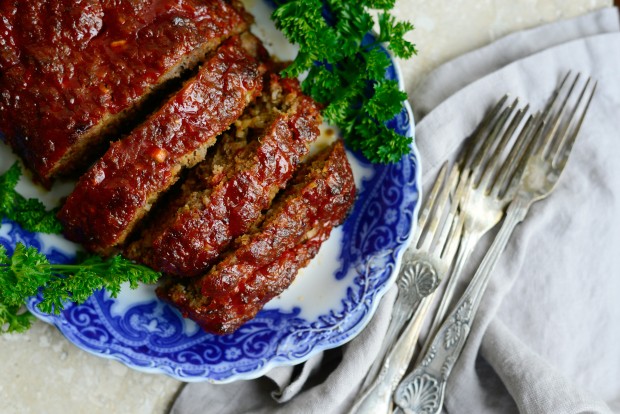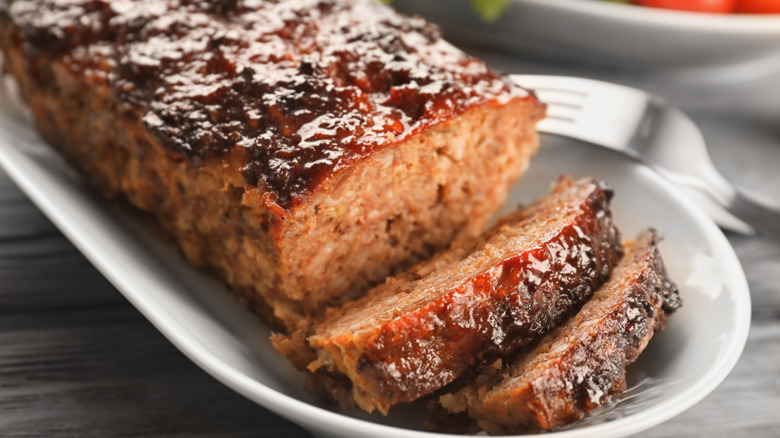Homestyle diner meatloaf is the epitome of American comfort food—a hearty, savory loaf that conjures images of checkered tablecloths, bottomless coffee, and the hum of a bustling roadside eatery. Picture slicing into a tender, moist slice topped with a tangy glaze, the edges caramelized to perfection, releasing aromas of onion, garlic, and herbs that transport you straight to a classic diner booth. This humble dish, often overlooked in gourmet circles, has been a staple on diner menus for decades, offering affordable nourishment and nostalgic flavors in every bite.
In this in-depth guide, we’ll explore everything you need to recreate that authentic diner experience at home. From its intriguing history tied to ancient Roman roots and Depression-era ingenuity to the science that ensures a juicy interior without crumbling, we’ll break it down. Homestyle Diner Meatloaf You’ll find a tried-and-true step-by-step recipe, 10 insider secrets for flawless results, inventive variations to suit any palate, nutritional breakdowns, ideal side dish pairings, and practical advice on serving and storage. Whether you’re feeding a family or meal-prepping for the week, this 3000-word article will turn you into a meatloaf maestrohttps://tastetrove.net.

The Fascinating History of Meatloaf: From Ancient Origins to American Diner Icon
Homestyle Diner Meatloaf journey is a tale of resourcefulness, cultural fusion, and evolution from necessity to beloved classic. While often pegged as a quintessentially American dish, its origins date back millennia, weaving through empires before landing on diner counters.
The concept of mixing ground meat with fillers traces to ancient Rome around the 5th century AD, where Apicius’s cookbook described a patty of minced meat blended with spices, bread soaked in wine, and pine nuts—essentially an early forerunner to modern meatloaf. This Roman “isicia omentata” was a practical way to use scraps, a theme that persisted through medieval Europe. German immigrants brought “scrapple” to colonial America in the 1700s—a Pennsylvanian Dutch concoction of pork scraps, cornmeal, and spices formed into a loaf and sliced for frying. By the 1800s, American recipes evolved, with one 1807 family formula using deer meat, onions, carrots, and grated apple for natural sweetness and moisture.
Homestyle Diner Meatloaf The modern American meatloaf truly emerged in the late 19th century. The first printed recipe resembling today’s version appeared in the 1870s, instructing cooks to finely chop cold leftover meat, bind it with eggs and breadcrumbs, and bake it—stretching resources in an era of thrift. Industrialization played a role: The invention of mechanical meat grinders in the 1870s made ground beef accessible, transforming meatloaf from a luxury to a weekday staple.
The Great Depression of the 1930s cemented meatloaf’s status as a symbol of resourcefulness. Families extended scarce meat with inexpensive fillers like oats or breadcrumbs, creating filling meals on a budget. It became synonymous with home economics, featured in government pamphlets promoting economical cooking. Post-WWII, meatloaf hit diner menus nationwide, embodying affordable, hearty fare for truckers and families alike. Diners like those along Route 66 served “homestyle” versions with ketchup glaze, evoking mom-and-pop warmth amid the era’s booming car culture.
Today, Homestyle Diner Meatloaf remains a diner darling, with regional twists like Southern versions spiked with barbecue sauce or Midwestern ones loaded with cheese. Its enduring appeal lies in versatility— a canvas for cultural spices linking cooks to their heritage. For more on American classics, visit our [internal link: /blog/American-diner-favorites]. Dive deeper into its timeline on Wikipedia’s Meatloaf page.
The Science Behind Homestyle Meatloaf: Ingredients and Cooking Demystified
Homestyle Diner Meatloaf Crafting the perfect meatloaf isn’t just art—it’s science. Understanding the chemistry ensures a moist, cohesive loaf that doesn’t crumble or dry out.
At its core, meatloaf relies on proteins like myosin in ground meat, which bind when kneaded, creating a sticky network that holds shape. Overmixing activates too much myosin, leading to a dense, rubbery texture—aim for gentle folding. Fat content is crucial: Use 80/20 ground beef for juiciness, as fat melts during cooking, basting the loaf internally while preventing dryness.
Homestyle Diner Meatloaf Binders like breadcrumbs or oats absorb moisture from eggs and milk, swelling via starch gelatinization to lock in juices. Soaking them in milk (a parade) hydrates the mix, ensuring tenderness; without it, the loaf turns brick-like. Eggs provide structure through coagulating proteins, while vegetables like onions release water slowly, adding flavor and moisture without sogginess.
Cooking temperature matters: Bake low and slow (325-350°F) to allow even heat distribution, preventing the exterior from overcooking before the center reaches 160°F. Resting post-bake lets juices redistribute, avoiding a dry slice.Crumbling? Add more binder.
Dry? Use fattier meat.
Science hack: Add grated vegetables for natural pectin that binds without toughness. For expert insights, check Epicurious’s 4 Levels of Meatloaf.
Essential Ingredients for Homestyle Diner Meatloaf
Quality basics yield diner-worthy results. For 6-8 servings:
- Ground Meat: 2 lbs 80/20 beef (or beef-pork mix for flavor).
- Binders: 1 cup breadcrumbs or oats, soaked in ⅔ cup milk.
- Vegetables: 1 onion, 1 bell pepper, finely chopped.
- Eggs: 2 large, for binding.
- Seasonings: Salt, pepper, garlic powder, Worcestershire sauce.
- Glaze: Ketchup, brown sugar, mustard.
opt for fresh herbs if possible. See our [internal: /recipes/ingredient-spotlight-ground-beef] for tips.
Step-by-Step Recipe: Mastering Homestyle Diner Meatloaf at Home
This classic recipe delivers tender, flavorful results. Prep: 20 min. Bake: 1 hr. Serves 6-8.
Step 1: Prep the Panade (5 minutes)
Soak 1 cup breadcrumbs in ⅔ cup milk for 5 minutes.
Step 2: Sauté Veggies (5 minutes)
Cook 1 chopped onion and bell pepper until soft.
Step 3: Mix the Meat (5 minutes)
Combine 2 lbs ground beef, panade, veggies, 2 eggs, seasonings. Mix gently.
Step 4: Shape and Glaze (5 minutes)
Form into loaf, top with ketchup mix.
Step 5: Bake (60 minutes)
At 350°F to 160°F internal. Rest 10 minutes.
Full tutorial: Paula Deen’s Old-Fashioned Meatloaf.

10 Secrets to Achieving the Perfect Homestyle Meatloaf
Elevate your loaf with these pro tips:
- Fat Balance: Use 80/20 beef for moisture.
- Panade Power: Soak binders in milk.
- Veggie Boost: Grate onions for even distribution.
- Gentle Mixing: Avoid overworking.
- Low Temp Bake: Slow for even cooking.
- Rest It: 10 minutes post-bake.
- Sauté First: Cook veggies to release flavors.
- Glaze Midway: Add halfway for caramelization.
- Internal Temp: 160°F for safety and juiciness.
- Filler Ratio: Enough to bind, not overwhelm.
Watch this YouTube guide for visuals.
Exploring Variations: Creative Twists on Homestyle Meatloaf
Spice it up:
- Bacon Cheeseburger: Stuff with cheese, top with bacon.
- Italian: Add parmesan, herbs, marinara glaze.
- Taco: Season with cumin, top with salsa.
- BBQ: Glaze with sauce, mix in pulled pork.
- Philly Cheesesteak: Peppers, onions, provolone.
More ideas in our [internal: /international-meat-recipes].
Nutrition Facts and Health Considerations
A 4oz slice: ~250 calories, 15g fat, 15g protein, 10g carbs. High in protein but watch sodium. Leaner turkey versions cut fat. Details at Nutritionix.
Perfect Side Dishes to Pair with Meatloaf
Enhance the mealhttps://tastetrove.net:
- Classics: Mashed potatoes, mac ‘n’ cheese.
- Veggies: Green beans, corn, salad.
- Alternatives: Rice pilaf, roasted veggies.
Recipes at [internal: /sides-for-comfort-foods].
